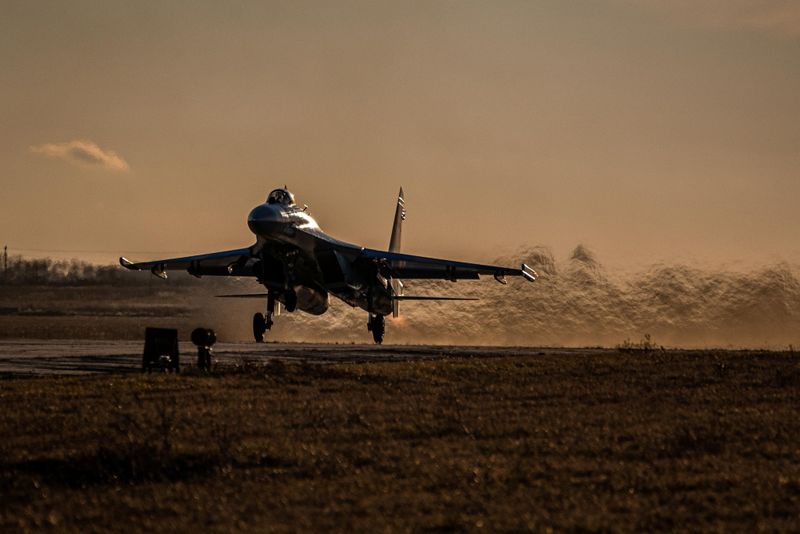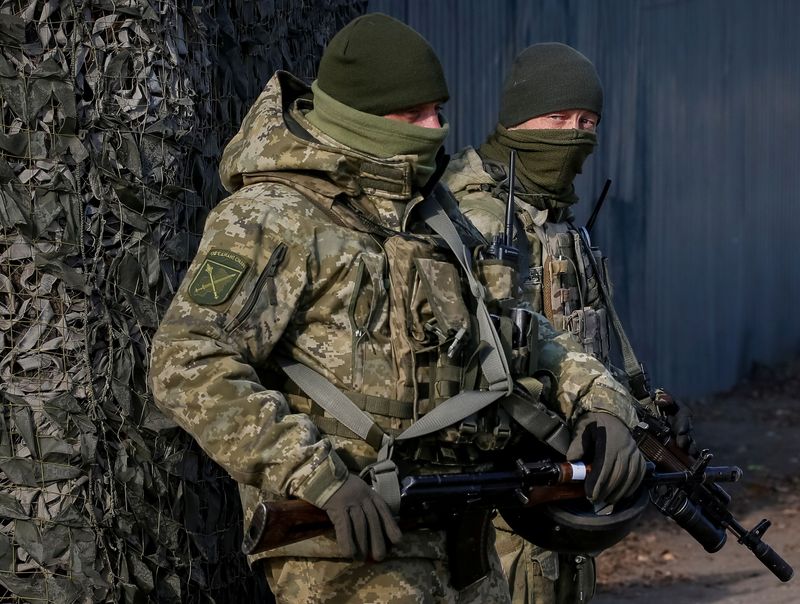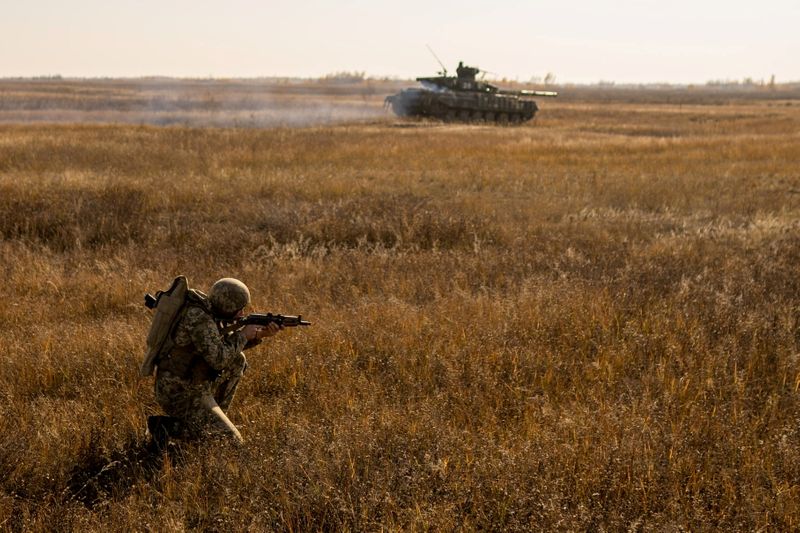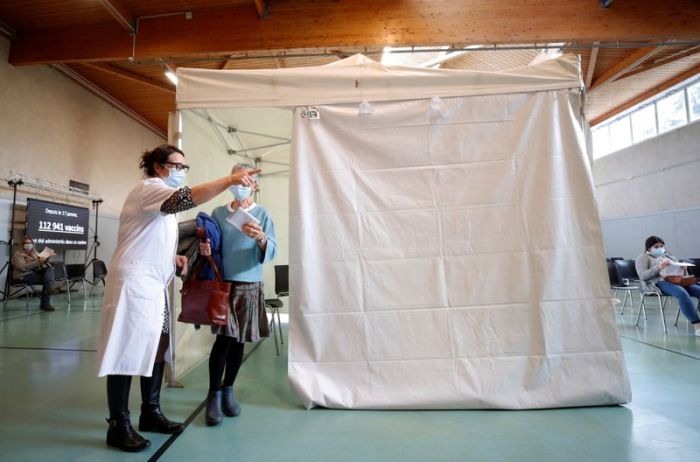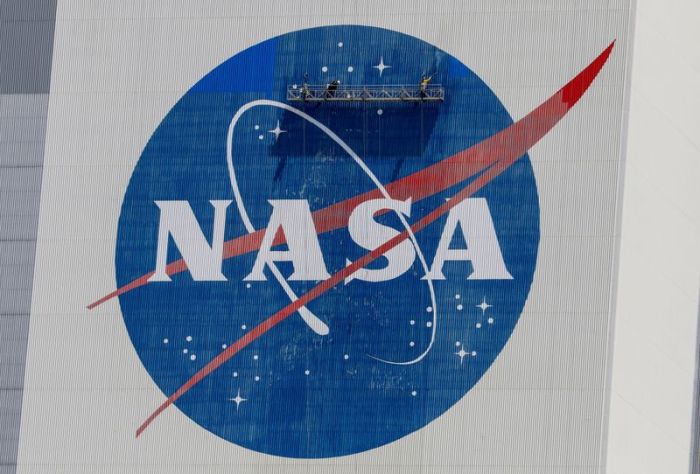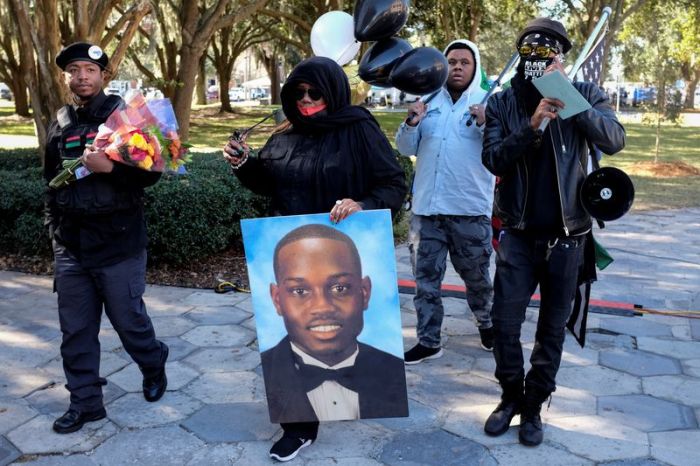(This Nov.24 story corrects Estonian Prime Minister title in paragraph 6)
MOSCOW/KYIV (Reuters) – Russia staged military drills in the Black Sea, south of Ukraine, on Wednesday and said it needed to sharpen the combat-readiness of its conventional and nuclear forces because of heightened NATO activity near its borders.
Ukraine, which says it believes Russia may be preparing an invasion, held exercises of its own near the frontier with Belarus. An independent Russian investigative group posted photos and videos it said showed movements of tanks and other military vehicles in southern Russia in the past few days.
The increase of military activity on both sides follows weeks of rising tension that have raised the risk of war https://www.reuters.com/world/europe/qa-what-is-risk-war-between-russia-ukraine-2021-11-23 between the two ex-Soviet neighbours, even though Russia denies aggressive intent and Western intelligence sources have told Reuters they do not see any invasion as imminent.
Ukraine is not a NATO member but the United States and the alliance have signalled their backing for Kyiv in ways that Moscow considers provocative, including through warship manoeuvres this month in the Black Sea and a delivery of U.S. patrol boats to the Ukrainian navy.
British Foreign Secretary Liz Truss told Reuters it would be “a grave mistake from Russia” to attack Ukraine.
Estonian Prime Minister Kaja Kallas said the European Union must make it clear to Russia that there would be a high price to pay if it acted against Ukraine, urging the EU to quickly agree on how to deter Moscow.
In Wednesday’s exercises in the Black Sea, Russian fighter planes and ships practiced repelling air attacks on naval bases and responding with air strikes, Interfax reported.
Separately, the news agency quoted Defence Minister Sergei Shoigu as saying the need for Russia to further develop its armed forces was dictated by “the complicated military and political conditions in the world and the growing activity of NATO countries near Russia’s borders”.
He said raising the armed forces’ capabilities, supporting the combat preparedness of nuclear forces and strengthening the potential of non-nuclear deterrence are among the priorities.
Shoigu complained on Tuesday that U.S. bombers had rehearsed a nuclear strike on Russia from two different directions earlier this month, and that the planes had come too close to the Russian border. The Pentagon said these drills adhered to international protocols.
UKRAINIAN ‘SPECIAL OPERATION’
Ukraine, which has tilted towards the West since a popular uprising ousted a pro-Russian president in 2014, on Wednesday held what it called a “special operation” at the border with Belarus, including drone exercises and military drills for anti-tank and airborne units.
It has deployed 8,500 extra troops to its boundary with Belarus, saying it fears being drawn into a migrant crisis which has seen the European Union accuse Minsk of flying in people from the Middle East and pushing them to enter neighbouring Poland. Belarus denies fomenting the crisis.
Kyiv also worries that the border with Belarus, a close Russian ally, could be used by Moscow to stage a military assault.
The head of Ukraine’s military intelligence told the Military Times outlet last weekend that Russia had more than 92,000 troops massed around Ukraine’s borders and was preparing for an attack by the end of January or beginning of February.
Moscow has dismissed such suggestions as inflammatory, said it was not threatening anyone and defended its right to deploy its troops as it wished.
The Conflict Intelligence Team, an independent Russian investigative group, posted video and photos on its website showing movements of tanks, infantry combat vehicles and howitzers this month near Voronezh, about 190 km (120 miles) from the Ukrainian border, and a new concentration of army vehicles at a training ground to the south of the city.
It also posted what it said was video evidence of military trains carrying infantry fighting vehicles and armoured personnel carriers in the past two days to Valuyki, 23 km from the Ukrainian border.
The group said Russian troops had been arriving as well in Crimea, the peninsula seized by Russia from Ukraine in 2014.
It said its assessment was that Russian troops would be ready for potential operations inside Ukraine no earlier than the start of next year.
Intelligence sources, diplomats and analysts have told Reuters that Moscow may be using the escalation as part of a wider strategy to exert pressure in Europe, including by backing Belarus in the migrant crisis and parlaying its influence as the continent’s top gas supplier into pressure for quick regulatory approval of its new Nord Stream 2 pipeline to Germany.
“It feels… more like another piece of coercive leverage that the Russians are heaping onto this strategic situation in Eastern Europe,” said Samir Puri, senior fellow in hybrid warfare at the International Institute for Strategic Studies.
“It may well have value in that alone, rather than having to be followed through with a full-scale invasion which would be politically disastrous for Putin.”
(Additional reporting by Maxim Rodionov; Writing by Mark Trevelyan; Editing by Mark Heinrich)

